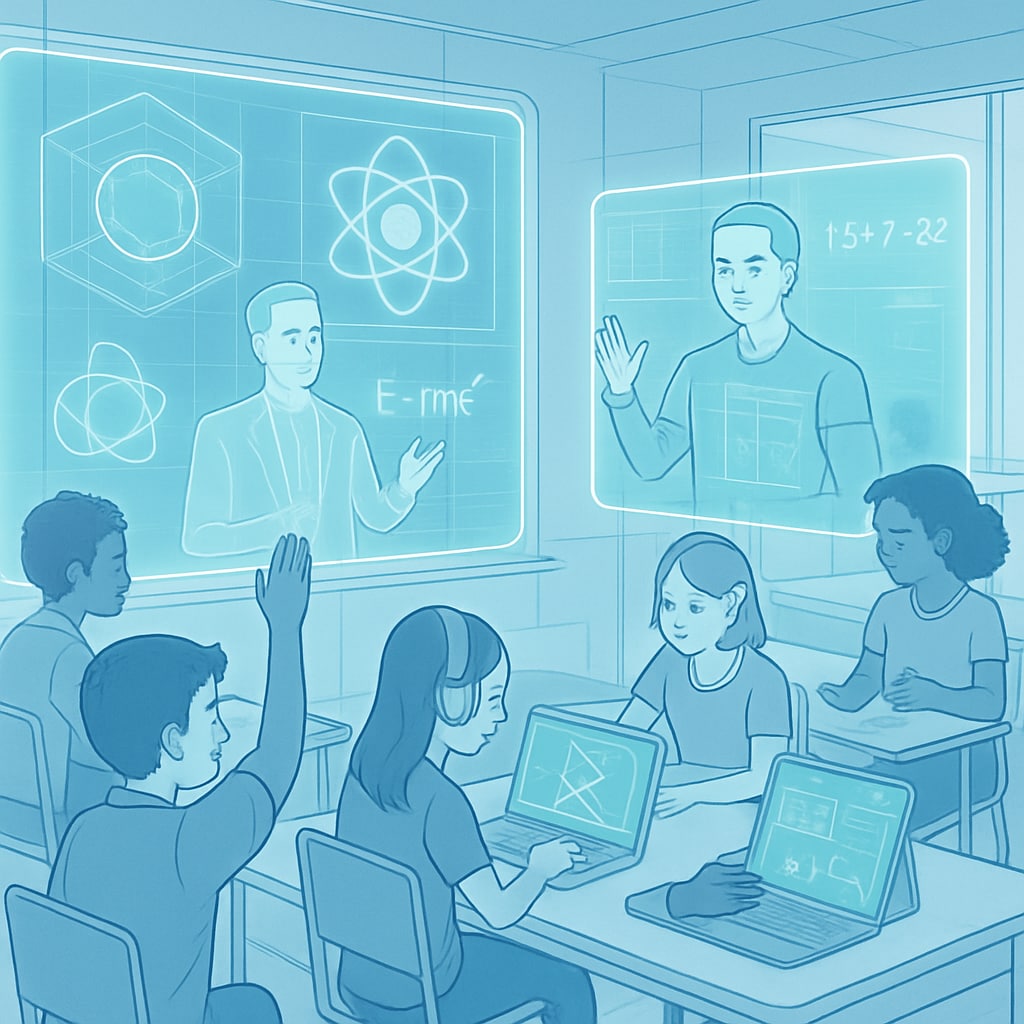Artificial intelligence (AI) is revolutionizing education, driving significant trends that promise to reshape learning in profound ways. From personalized learning tools to intelligent tutoring systems, AI is redefining how students engage with knowledge. By 2030, the integration of AI into K12 education is expected to create transformative learning environments that cater to individual needs and foster creativity. This article explores the current applications of AI in education, the trends shaping its evolution, and the exciting possibilities for the future classroom.
AI in K12 Education: Current Applications and Benefits
The integration of AI in K12 education is already showing promising results. Schools and educators are leveraging AI-powered solutions to enhance teaching and learning experiences. Some of the most impactful applications include:
- Personalized Learning: AI algorithms analyze student performance to tailor learning content and pace, ensuring that each student receives customized support.
- Intelligent Tutoring Systems: AI tutors provide real-time feedback and interactive learning experiences, bridging gaps in student understanding.
- Administrative Efficiency: From grading to scheduling, AI tools reduce teachers’ administrative workload, allowing more time for classroom engagement.
- Language Learning: AI-driven language apps use natural language processing to provide immersive and adaptive language acquisition opportunities.
These applications demonstrate how AI can address diverse educational challenges, from improving accessibility to enhancing student engagement. For example, tools like AI-powered Britannica have revolutionized how students access and absorb information.

Trends Shaping AI-Driven Education
As AI continues to evolve, several key trends are shaping its role in education. These trends provide a glimpse into how K12 classrooms will look by 2030:
- Adaptive Assessments: AI systems will move beyond standard tests, offering dynamic assessments that adapt to students’ progress in real-time.
- AI and STEAM Education: The integration of AI into science, technology, engineering, arts, and mathematics (STEAM) will promote hands-on learning and innovation.
- Ethics and AI Literacy: Schools will increasingly focus on teaching students about the ethical implications and responsible use of AI technology.
- Global Collaboration: AI tools will connect classrooms worldwide, fostering cross-cultural learning and collaboration.
In addition, the use of AI to support students with disabilities and language barriers is growing. For instance, AI-based translation tools and speech-to-text systems ensure inclusive learning environments. These advancements align with the broader goals of equity and accessibility in education.
The AI Classroom of 2030: A Futuristic Outlook
Looking ahead to 2030, the classroom of the future will be unrecognizable compared to today. AI will serve as the backbone of a highly interconnected, data-driven learning ecosystem. Here are some projections for the AI-powered classrooms of 2030:
- Fully Immersive Environments: Augmented reality (AR) and virtual reality (VR), powered by AI, will create interactive simulations that bring lessons to life.
- Emotionally Intelligent AI: AI systems will recognize and respond to students’ emotional states, offering personalized support to maintain motivation and mental well-being.
- Teacher-AI Collaboration: Teachers will work alongside AI to deliver hybrid learning experiences, where human empathy meets machine precision.
- Lifelong Learning Hubs: AI-enabled platforms will extend beyond K12 education, supporting lifelong learning and skill development.
The transformative potential of AI in education is immense. It promises to make learning more engaging, equitable, and efficient. As a result, the next generation of students will not only acquire knowledge but also develop critical thinking and problem-solving skills essential for a rapidly changing world.

In conclusion, artificial intelligence is poised to play a central role in the evolution of education. The trends and innovations we see today are just the beginning. By 2030, AI-driven classrooms will not only enhance academic outcomes but also empower students to navigate an increasingly complex and interconnected world. The future of education is bright, and AI is lighting the way.
Readability guidance: This article uses concise paragraphs, clear subheadings, and bullet points to enhance readability. It avoids overly technical language while maintaining a professional tone, making it accessible to a broad audience.


